#woody maclain
Explore tagged Tumblr posts
Text
🔥🌟 Drama Unfolds in High-Stakes Showdowns and Surprising Alliances! 💔💸

In the latest twists and turns of power plays and personal struggles, tensions escalate as alliances are tested and loyalties questioned. Brayden finds himself entangled in a web of deceit as Noma uncovers the truth behind the Russian resurgence, leading to a confrontation that threatens to upend their illicit business dealings. Meanwhile, Tariq’s risky campus operations come under scrutiny, setting the stage for a clash of ambitions and hidden agendas.
As secrets unravel and betrayals simmer, Monet and Dru navigate a delicate balance between family ties and ruthless ambition. Monet’s heartfelt apology signals a shift in priorities towards unity, but looming threats and unresolved issues look large over their fragile truce. Will the desire to mend broken bonds overshadow the allure of power and control?
The tension mounts as personal vendettas collide with calculated moves, blurring the lines between friend and foe. Noma’s unexpected encounter with Zion ignites a chain of events that leads to a dangerous face-off, testing loyalties and allegiances in the unforgiving world of illicit trades and underworld alliance. Will the promise of power be enough to keep the fragile peace intact?
Amidst the chaos, a ray of hope emerges as Diana grapples with life-changing decisions that could alter her path forever. As she faces the challenges of motherhood and the harsh realities of her surroundings, a new chapter unfolds with unexpected consequences. Will she find the strength to navigate the treacherous waters ahead, or will the shadows of the past cast a long shadow over her uncertain future?
The mid-season finale leaves us on the edge of our seats, eager to see how the intricate web of relationships and rivalries will unravel. With stakes higher than ever and alliances shifting like sand, the journey ahead promises to be filled with twists, turns, and betrayals that will keep us guessing until the very end. Are you ready for the explosive conclusion to this trilling saga? 🌪️🔮✨
#50 cent#method man#mary j bige#michael rainey jr#michael ealy#alix lapri#power book ii: ghost#woody maclain#latoya tonodeo#lightskin keisha#gianni paolo#lorell adams-gray#tariq st patrick#tasha st patrick#david maclean#effie#dru#cane#diana tejada#brayden weston
0 notes
Text


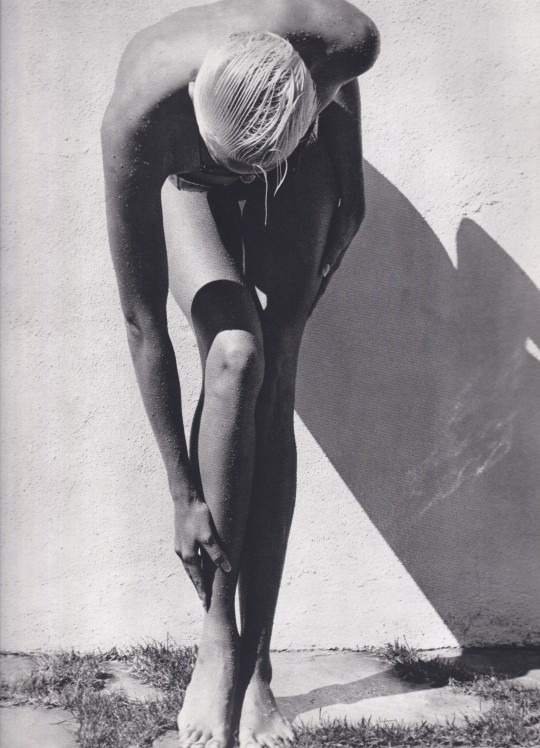
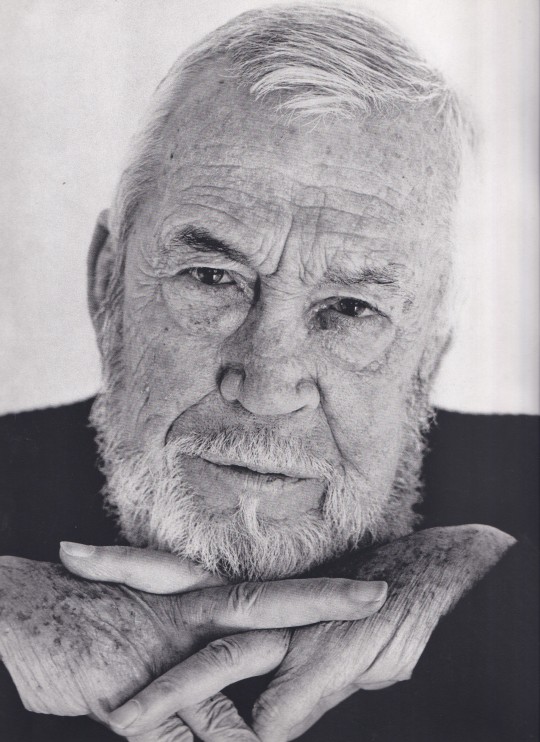

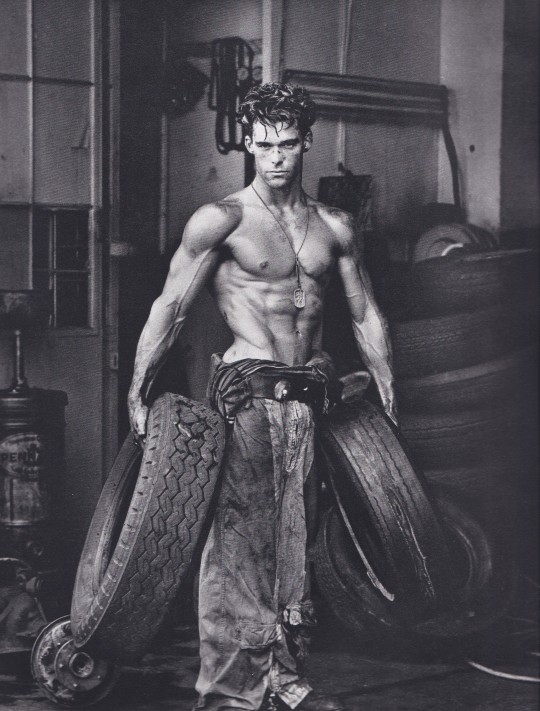
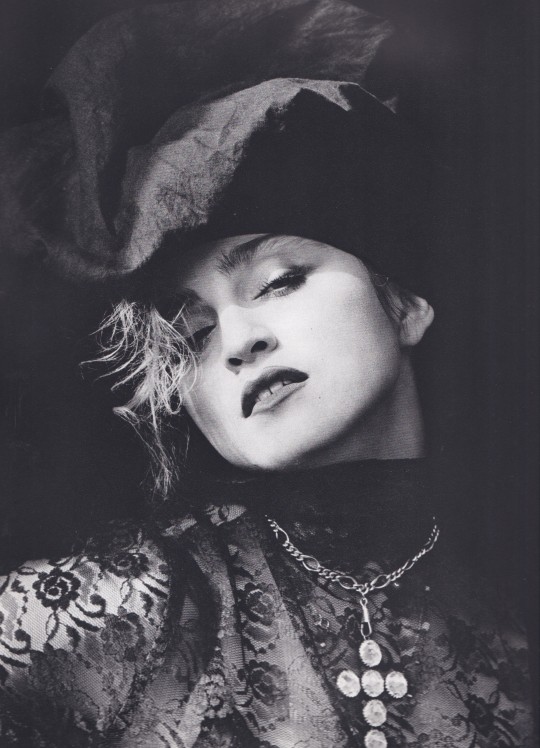


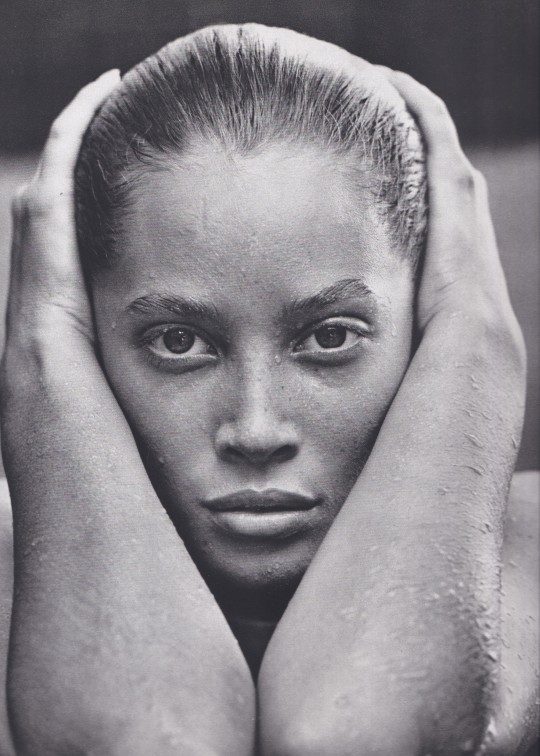
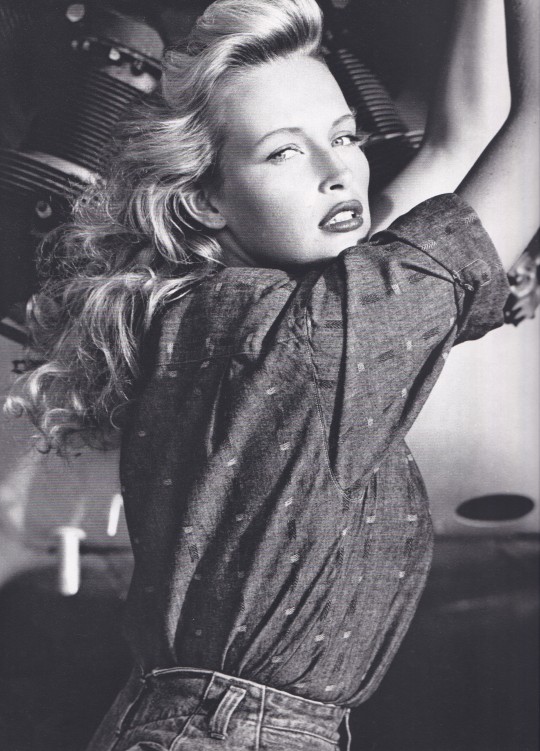
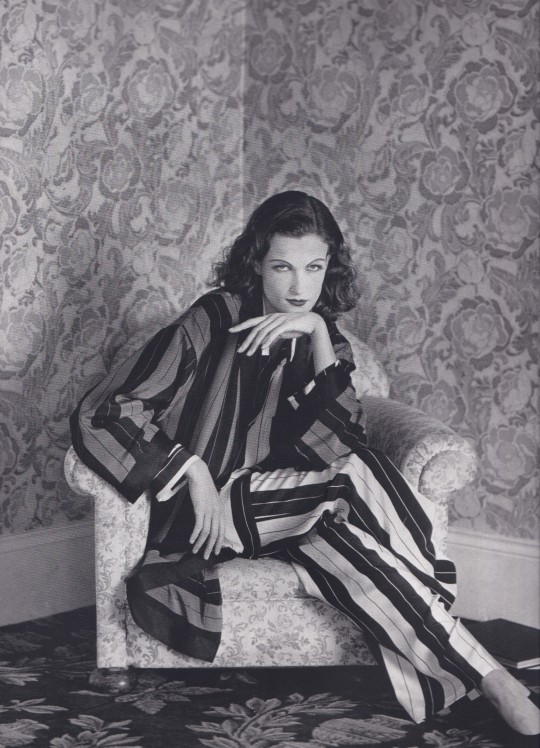
Herb Ritts Pictures
Design Jack Woody
Twin Palms , Los Angeles 1998, Third Edition (6.000 copies), 112 pages, 28x36cm, 78 sheet-fed gravure plates, ISBN 978-0-944092-02-8
euro 100,00
Herb Ritts' photographs quickly became the quintessential distillation of American Pop culture in the eighties. His portraits of celebrities are at once monumental, recognizable, and sexually charged. His pictures of Madonna have given cache to all she hopes to sell the world; glamour, sex, and song. Sylvester Stallone, another Pop icon, seems to parody himself with his macho posturing in Ritts' photographs. Others joining the pop parade are Pee Wee Herman, Tom Cruise, Jack Nicholson, Shirley MacLaine and Beach Boy Brian Wilson. This volume is the new testament of high Pop culture in the eighties.
14/03/24
12 notes
·
View notes
Text
THE 100 GREATEST SCREEN-PAIRS IN HISTORY OF WORLD CINEMA (@INDIES)!
.RAJESH KHANNA - MUMTAZ
.WALTER PIDGEON – GREER GARSON
.HUMPHREY BOGART – INGRID BERGMAN
.RICHARD BURTON – ELIZABETH TAYLOR
.ETHAN HAWKE – JULIE DELPY
.CHARLES CHAPLIN – EDNA PURVIANCE
.HUGH GRANT – JULIA ROBERTS
.KEANU REEVES – CARRIE-ANN MOSS
.RICHARD GERE - JULIA ROBERTS
.REX HARRISON – AUDREY HEPBURN
.CHARLES FARRELL – JANET GAYNOR
.CLARK GABLE – VIVIEN LEIGH
.UTTAM KUMAR – SUCHITRA SEN
.ROBERT REDFORD – BARBRA STREISAND
.DEV ANAND – WAHEEDA REHMAN
.CARY GRANT – INGRID BERGMAN
.KEANU REEVES – SANDRA BULLOCK
.GARY COOPER – INGRID BERGMAN
.JOSEPH FIENNES – GWYNETH PALTROW
.CHARLES BOYER – INGRID BERGMAN
.CARY GRANT – KATHERINE HEPBURN
.GURU DUTT – WAHEEDA REHMAN
.RAJESH KHANNA - TANUJA
.DILIP KUMAR - MADHUBALA
.TOM HANKS – MEG RYAN
.RAJESH KHANNA – SHARMILA TAGORE
.HUGH GRANT – RENEE ZELLWEGER
.SPENCOR TRACY – KATHERINE HEPBURN
.AMITABH BACHCHAN – PARVEEN BABI
.MICHEL PICCOLI – ROMY SCHNEIDER
.WOODY ALLEN – DIANE KEATON
.RAJESH KHANNA – REKHA
.MICHAEL DOUGLAS – GLENN CLOSE
.ALAIN DELON – ROMY SCHNEIDER
.ROD STEIGER – ROMY SCHNEIDER
.SHAMMI KAPOOR – ASHA PAREKH
.MARCELO MASTROIANNI – ROMY SCHNEIDER
.YVES MONTAND – SIMONE SIGNORET
.ALAIN DELON – ANNIE GIRARDOT
.JOHNNY DEPP – JULIETTE BINOCHE
.LAURENCE OLIVIER – VIVIEN LEIGH
.CLARK GABLE – JOAN CRAWFORD
.TREVOR HOWARD – CELIA JOHNSON
.PATRICK SWAYZE – JENNIFER GREY
.PREM NAZIR - SHEELA
.VINCENT CASSEL – MONICA BELLUCCI
.CLARK GABLE – AVA GARDNER
.JEAN-LOUIS TRINTIGNANT – ROMY SCHNEIDER
.JACK LEMMON – SHIRLEY MACLAINE
.HEATH LEDGER - JULIA STILES
.ANTHONY PERKINS – INGRID BERGMAN
.TOBEY MAGUIRE – KIRSTEN DUNST
.GREGORY PECK – AUDREY HEPBURN
.TOM CRUISE – RENEE ZELLWEGER
.AMITABH BACHCHAN - REKHA
.JAMES STEWART – MARGARET SULLAVAN
.RYAN GOSLING – RACHEL MCADAMS
.PRADEEP KUMAR – MEENA KUMARI
.ROBERT MONTGOMERY – ROSALIND RUSSELL
.JOHNNY DEPP – HELENA BONHAM CARTER
.BOBBY VERNON – GLORIA SWANSON
.DOUGLAS FAIRBANKS JR. – LORETTA YOUNG
.CLARK GABLE – CLAUDETTE COLBERT
.RAJESH KHANNA – ZEENAT AMAN
.GLENN FORD – GERALDINE PAGE
.LEONARDO DI CAPRIO – KATE WINSLET
.RAJESH KHANNA – ASHA PAREKH
.MEL GIBSON – CATHERINE MCCORMACK
.RAJ KAPOOR - NARGIS
.BRAD PITT – ANGELINA JOLIE
.CHRISTOPHER REEVE – MARGOT KIDDER
.CARY GRANT – SOPHIA LOREN
.SOUMITRA CHATTERJEE – MADHABI MUKHERJEE
.HUMPHREY BOGART – AUDREY HEPBURN
.SALMAN KHAN – AISHWARYA RAI
.ANTONIA BANDERAS – CATHERINE ZETA JONES
.RYAN O’ NEAL – BARBRA STREISAND
.JOHNNY DEPP – GWYNETH PALTROW
.MICHAEL DOUGLAS – KATHLEEN TURNER
.JAMES STEWART – CLAUDETTE COLBERT
.LAURENT MALET – ANNIE GIRARDOT
.DICK POWELL – OLIVIA DE HAVILLAND
.TOMMY STEELE – GERALDINE PAGE
.GEORGE BRENT – OLIVIA DE HAVILLAND
.MAURICE RONET – BRIGITTE BARDOT
.RAJESH KHANNA - SRIDEVI
.WILLIAM POWELL – MYRNA LOY
.ANTHONY PERKINS – ROMY SCHNEIDER
.MICKEY ROONEY – JUDY GARLAND
.RAJESH KHANNA - RAAKHEE
.SHAH RUKH KHAN - KAJOL
.RAAJ KUMAR – MEENA KUMARI
.MAHIPAL – ANITA GUHA
.RALPH FIENNES – JULIETTE BINOCHE
.ERROL FLYNN – OLIVIA DE HAVILLAND
.JOHN BOLES – BARBARA STANWYCK
.DHARMENDRA – MEENA KUMARI
.PETER FINCH – AUDREY HEPBURN
.MARLON BRANDO – KIM HUNTER
.MAURICE RONET – ROMY SCHNEIDER .
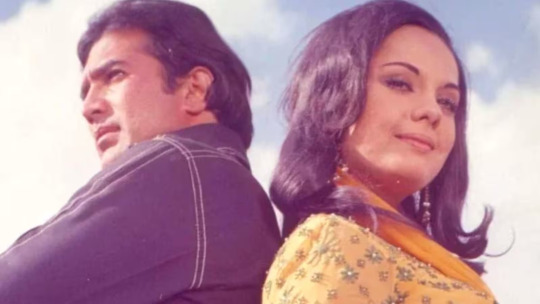
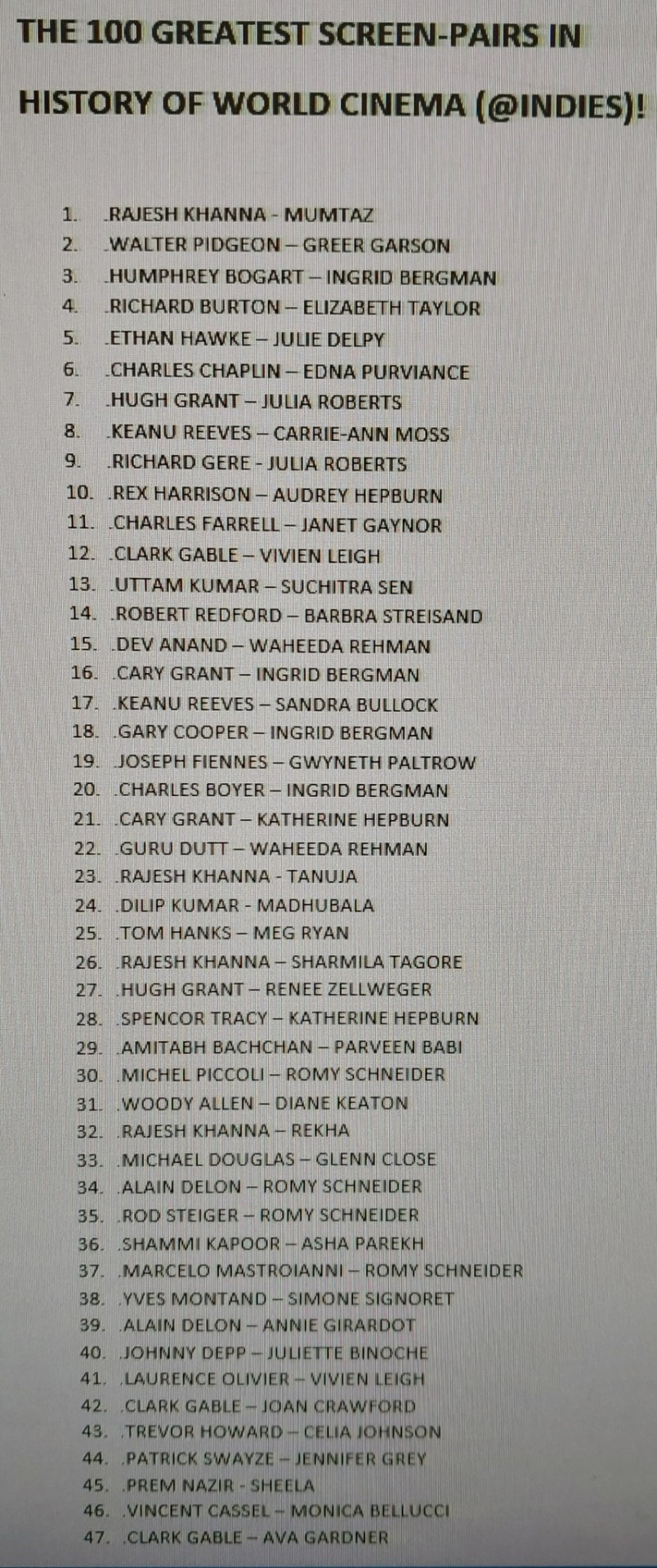
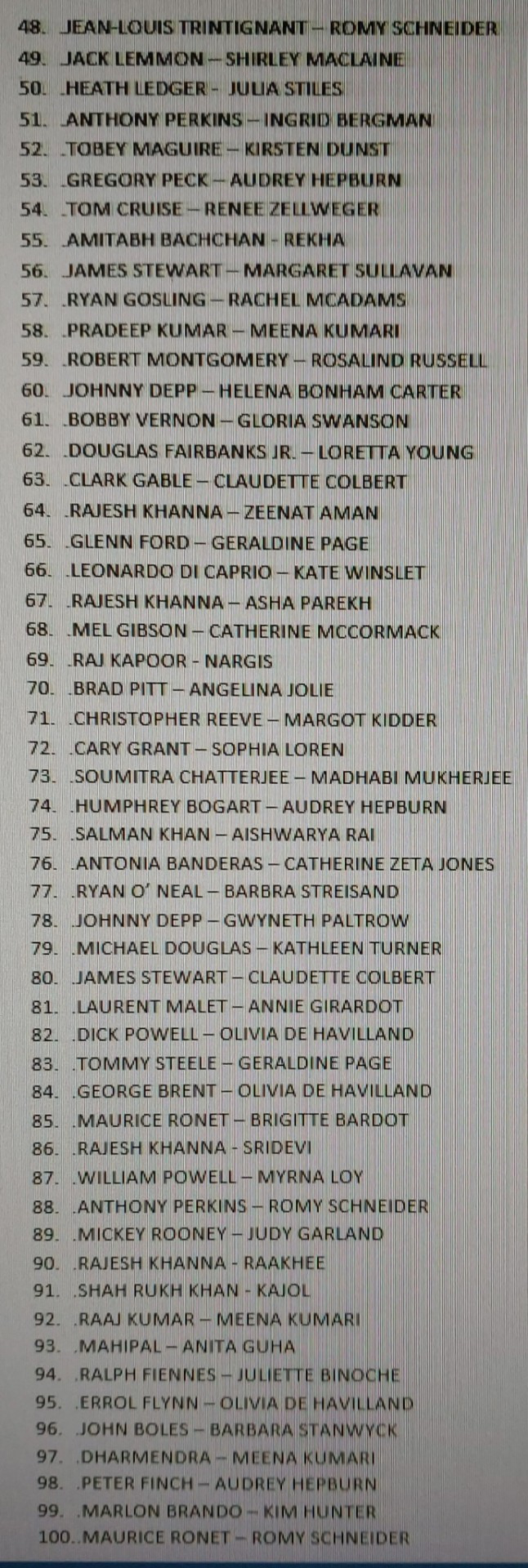
(P.S. - THE 2 PEOPLE WITH MOST ENTRIES IN THIS LIST, ARE-
RAJESH KHANNA OF INDIA WITH 8 ENTRIES, FOLLOWED BY ROMY SCHNEIDER OF AUSTRIA/FRANCE WITH 7 ENTRIES!)
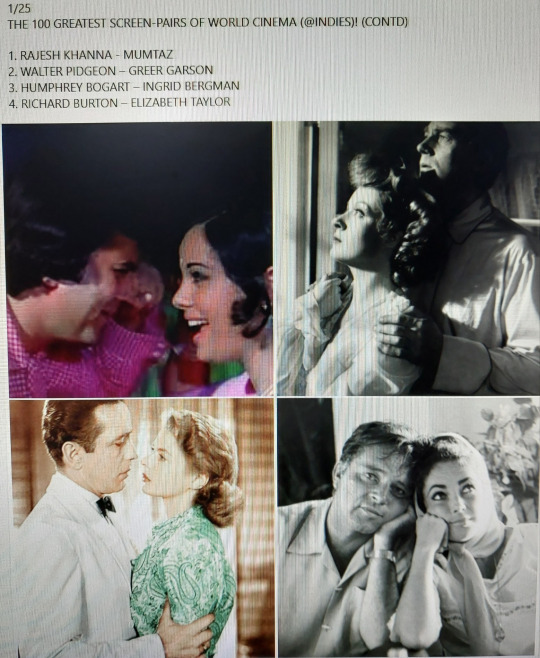
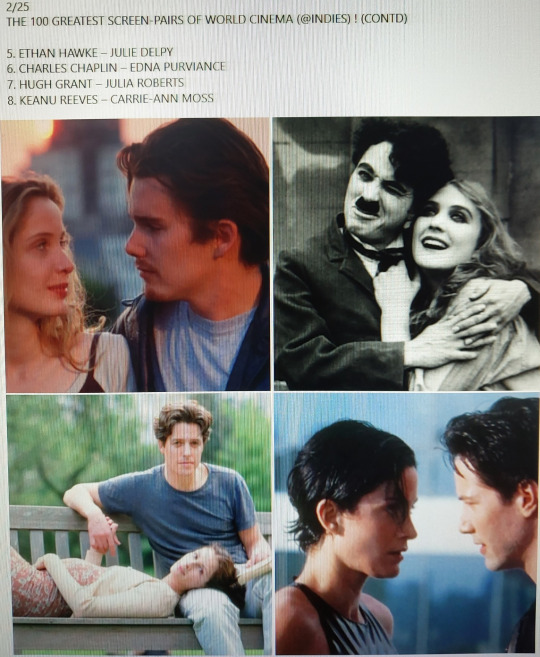

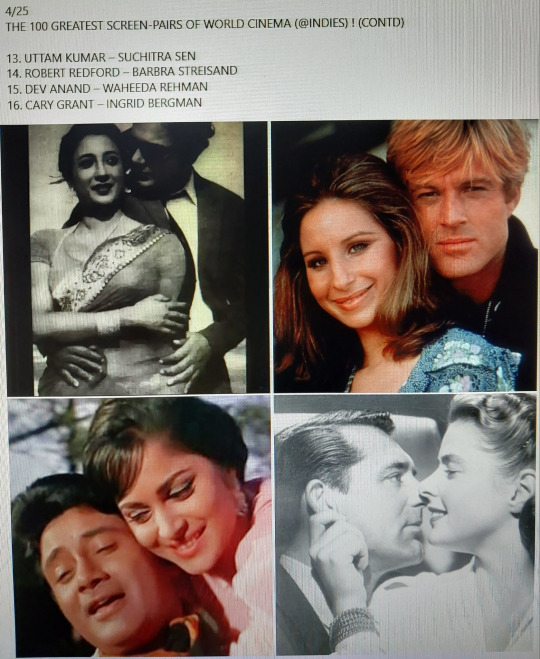
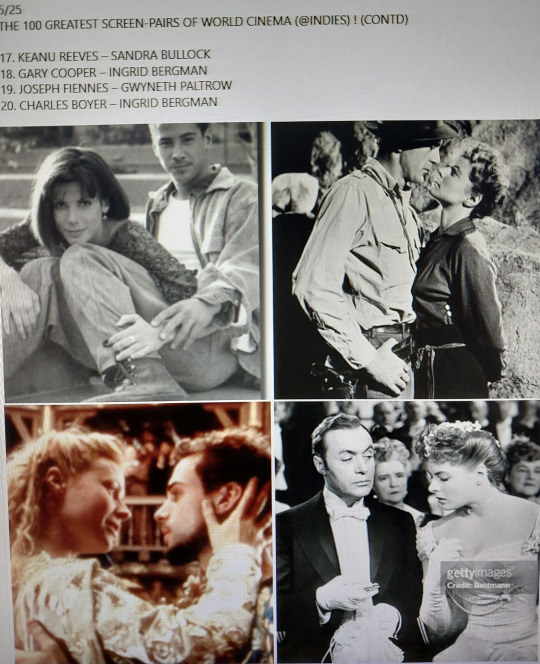
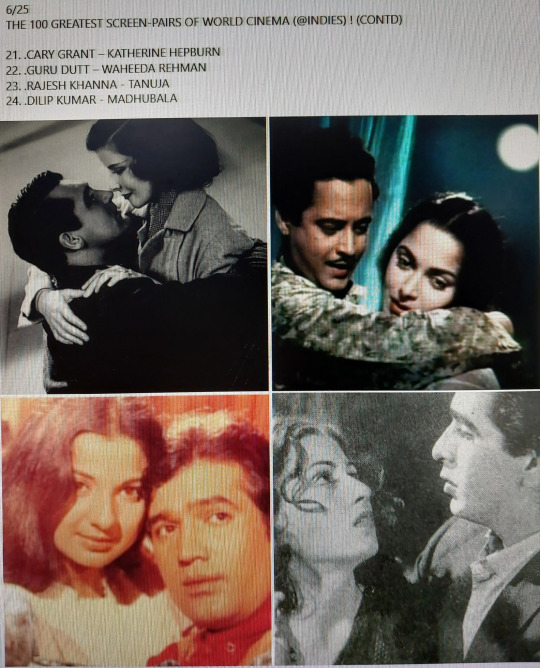
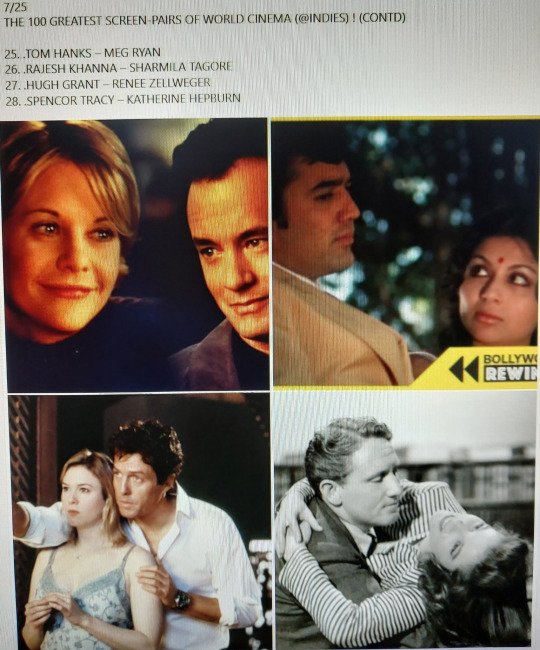
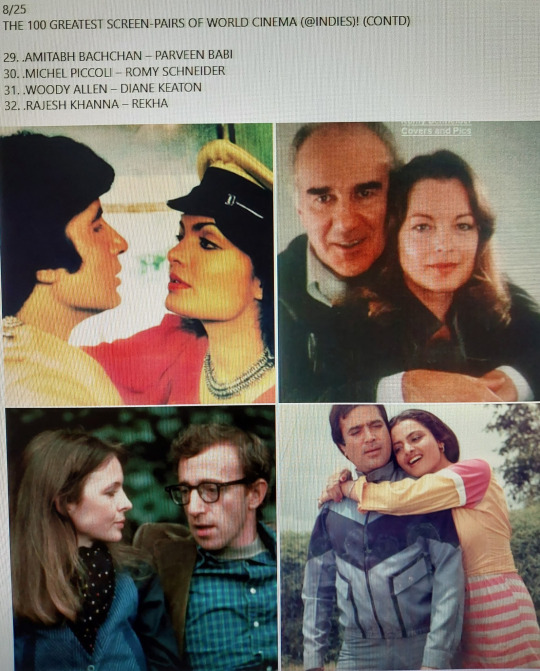
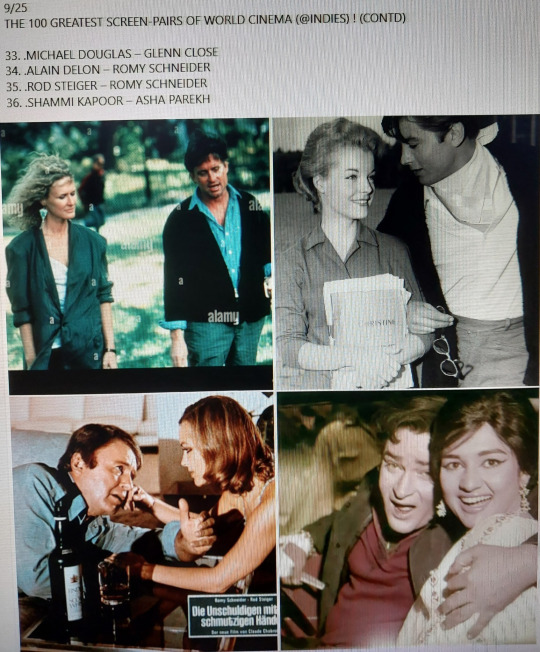

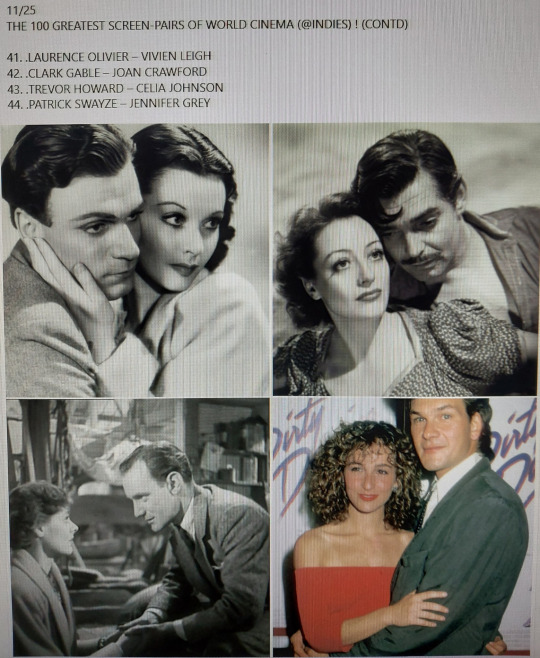


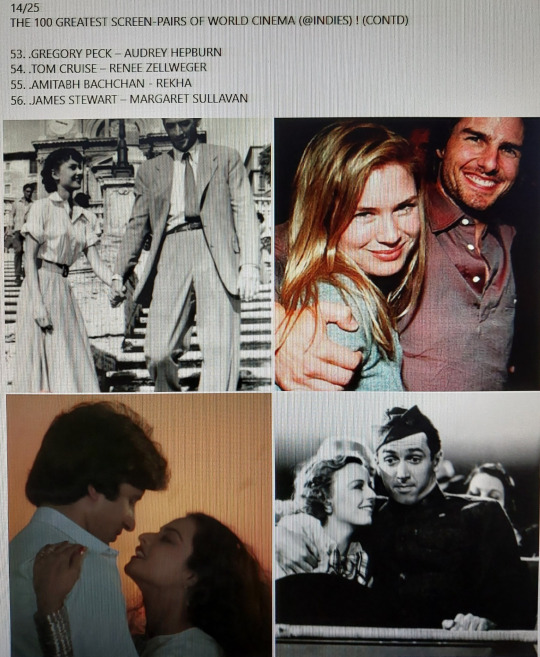

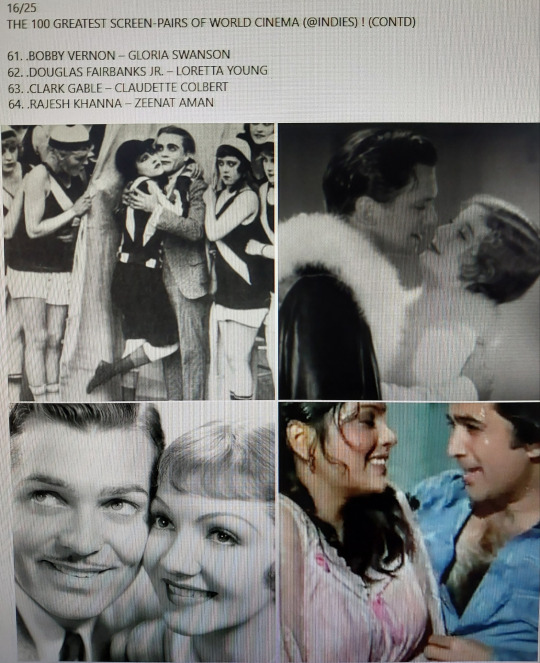
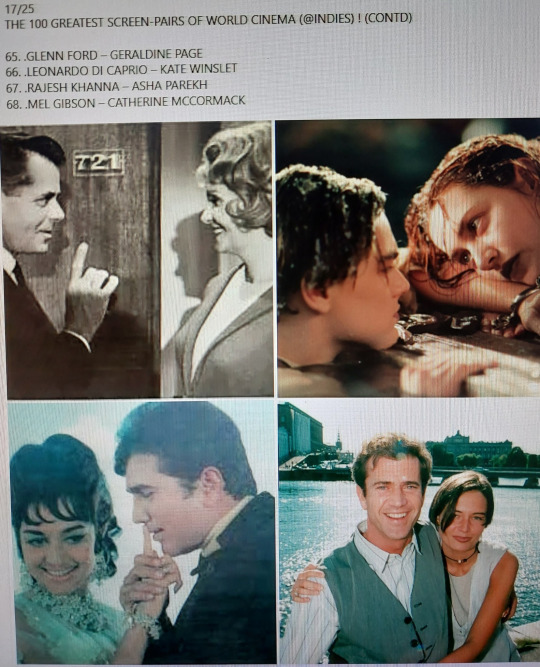
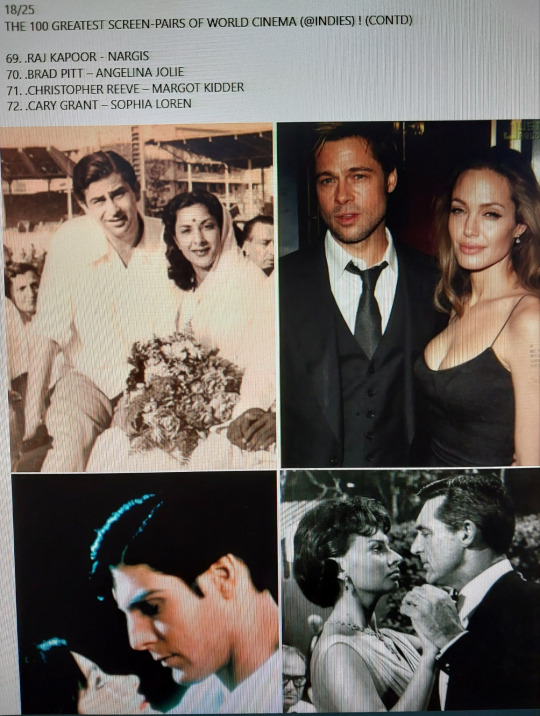
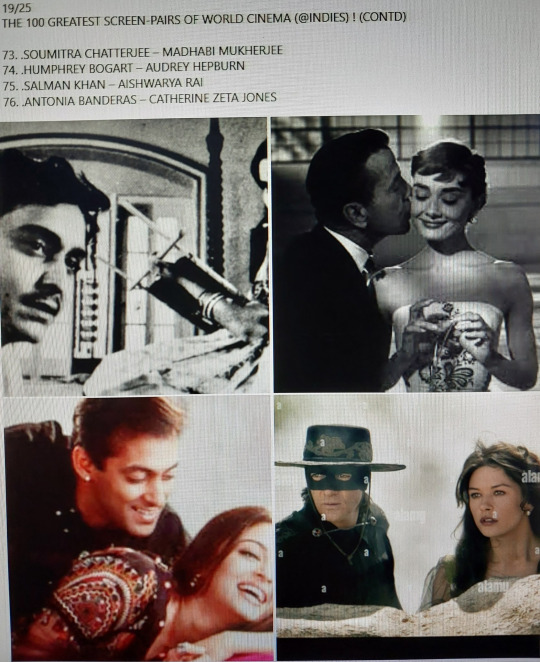

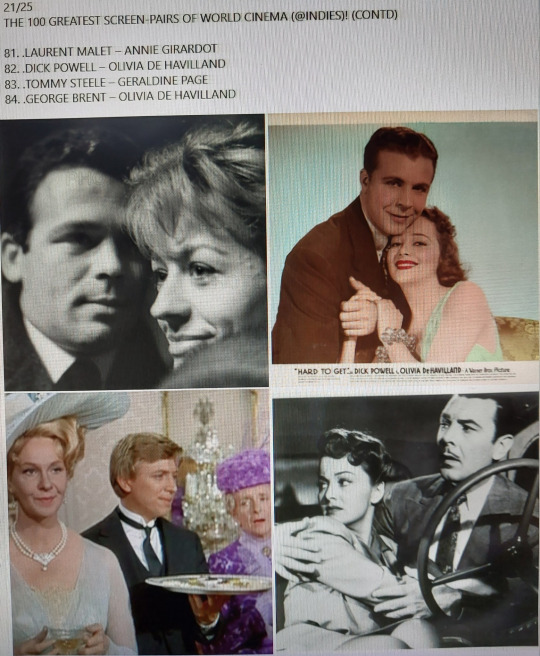
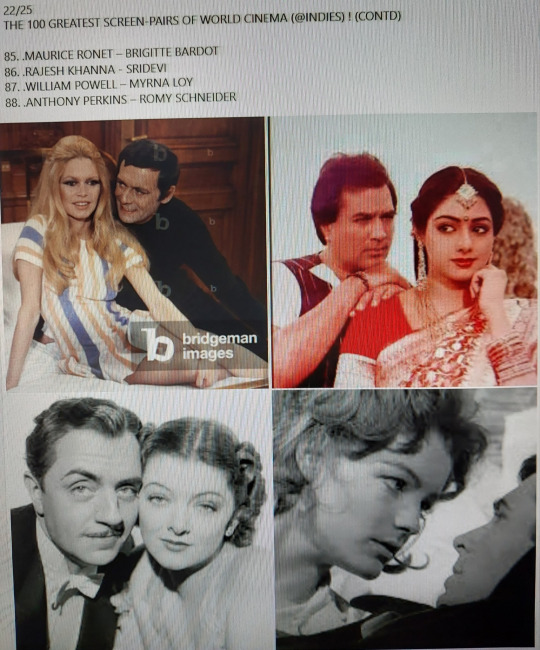
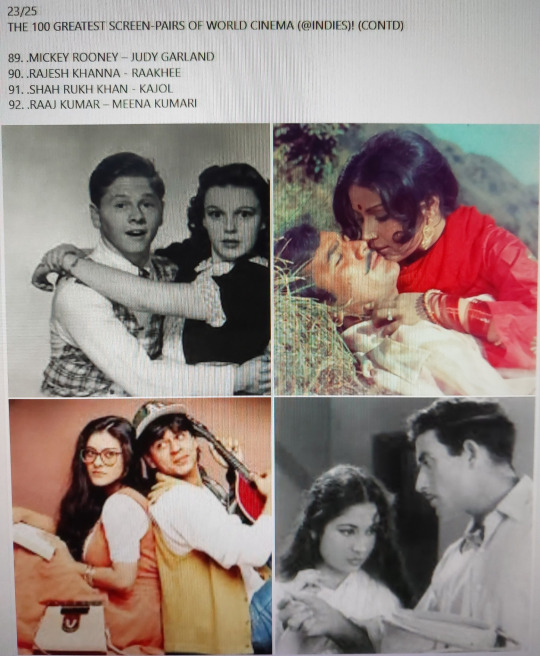

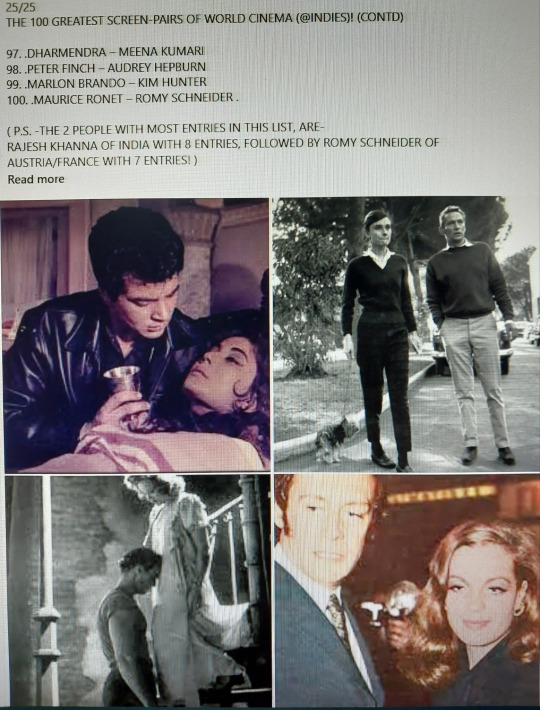
2 notes
·
View notes
Text
#TBT Star from January 30, 1990
Dr. Laughs, a.k.a. Joey Adams; some of the jokes can be seen in a different light


#tabloid#grain of salt#tabloid toc#tabloidtoc#tbt#tbthursday#throwback thursday#throwbackthursday#dr. laughs#joey adams#warren beatty#sophia loren#chevy chase#dean martin#bill cosby#alan alda#ava gardner#omar sharif#shirley maclaine#woody allen#cheryl ladd#jackie mason
2 notes
·
View notes
Text
Diabolik Lovers perfume dupes
Since a lot of us can't order over SKiTDolce here is a list of dupes according to their perfume notes.
P.S. I wasnt looking for cheap alternatives. Just for the closest matches. I might make a cheap dupe post afterwards.
Ayato - Beautiful- Estee Lauder
Kanato- Musk Bouque- Nych Paris
Laito - Allure Homme Sport Eau Extreme- Chanel
Shuu - Woody Conjure - Signature Fragrances London
Reiji- Osmanthus Guilin- Brecourt
Subaru- Mystere- Rochas
Ruki- Passion Mediterrannee Yachting- Pascal Morabito
Kou- White Orchid- Reis
Yuma- Fiori di Capri- Carthusia i profumi di capri
Azusa- Maclain Attitude- Lencia
Carla- L'essence- Balenciaga
Shin- Mayfair- Boadicea the Victorious
Kino- Baby Doll Sweet Love- Yves Saint Lauren
#diabolik lovers#dialovers#diahell#sakamaki shu#sakamaki reiji#sakamaki laito#ayato sakamaki#kanato sakamaki#sakamaki subaru#mukami ruki#kou mukami#yuma mukami#azusa mukami#carla tsukinami#shin tsukinami#kino sakamaki
170 notes
·
View notes
Photo
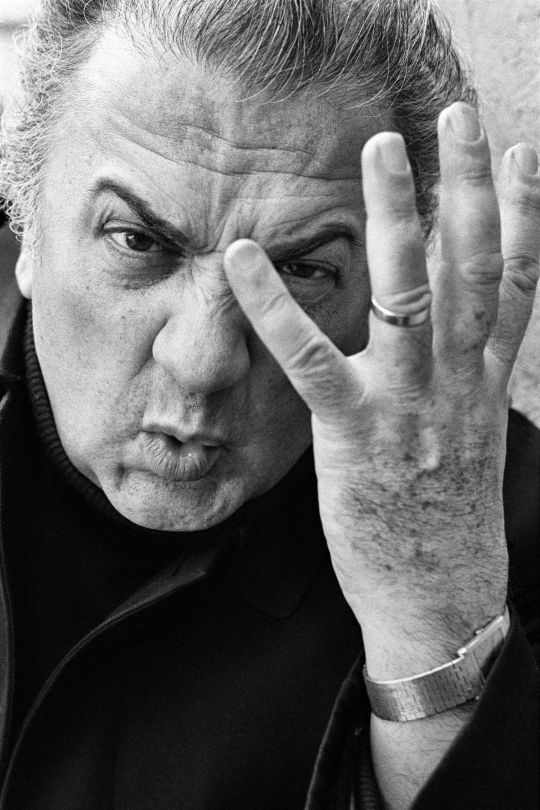
Federico Fellini, Cavaliere di Gran Croce OMRI, was born on January 20, 1920 in Rimini, then a small town on the Adriatic Sea. He was an Italian film director and screenwriter known for his distinctive style, which blends fantasy and baroque images with earthiness. He is recognized as one of the greatest and most influential filmmakers of all time. His films have ranked highly in critical polls such as that of Cahiers du cinéma and Sight & Sound, which lists his 1963 film 8 1⁄2 as the 10th-greatest film.
For La Dolce Vita Fellini won the Palme d'Or, was nominated for twelve Academy Awards, and won four in the category of Best Foreign Language Film, the most for any director in the history of the Academy. He received an honorary award for Lifetime Achievement at the 65th Academy Awards in Los Angeles. His other well-known films include La Strada (1954), Nights of Cabiria (1957), Juliet of the Spirits (1967), the "Toby Dammit" segment of Spirits of the Dead (1968), Fellini Satyricon (1969), Roma (1972), Amarcord (1973), and Fellini's Casanova (1976).
Personal and highly idiosyncratic visions of society, Fellini's films are a unique combination of memory, dreams, fantasy and desire. The adjectives "Fellinian" and "Felliniesque" are "synonymous with any kind of extravagant, fanciful, even baroque image in the cinema and in art in general". La Dolce Vita contributed the term paparazzi to the English language, derived from Paparazzo, the photographer friend of journalist Marcello Rubini (Marcello Mastroianni).
Contemporary filmmakers such as Tim Burton, Terry Gilliam, Emir Kusturica, and David Lynch have cited Fellini's influence on their work.
Polish director Wojciech Has, whose two best-received films, The Saragossa Manuscript (1965) and The Hour-Glass Sanatorium (1973), are examples of modernist fantasies, has been compared to Fellini for the sheer "luxuriance of his images".
I Vitelloni inspired European directors Juan Antonio Bardem, Marco Ferreri, and Lina Wertmüller and influenced Martin Scorsese's Mean Streets (1973), George Lucas's American Graffiti (1974), Joel Schumacher's St. Elmo's Fire (1985), and Barry Levinson's Diner (1982), among many others. When the American magazine Cinema asked Stanley Kubrick in 1963 to name his ten favorite films, he ranked I Vitelloni number one.
Nights of Cabiria was adapted as the Broadway musical Sweet Charity and the movie Sweet Charity (1969) by Bob Fosse starring Shirley MacLaine. City of Women was adapted for the Berlin stage by Frank Castorf in 1992.
8 1⁄2 inspired, among others, Mickey One (Arthur Penn, 1965), Alex in Wonderland (Paul Mazursky, 1970), Beware of a Holy Whore (Rainer Werner Fassbinder, 1971), Day for Night (François Truffaut, 1973), All That Jazz (Bob Fosse, 1979), Stardust Memories (Woody Allen, 1980), Sogni d'oro (Nanni Moretti, 1981), Parad Planet (Vadim Abdrashitov, 1984), La Pelicula del rey (Carlos Sorin, 1986), Living in Oblivion (Tom DiCillo, 1995), 8 1⁄2 Women (Peter Greenaway, 1999), Falling Down (Joel Schumacher, 1993), and the Broadway musical Nine (Maury Yeston and Arthur Kopit, 1982). Yo-Yo Boing! (1998), a Spanish novel by Puerto Rican writer Giannina Braschi, features a dream sequence with Fellini inspired by 8 1⁄2.
Fellini's work is referenced on the albums Fellini Days (2001) by Fish, Another Side of Bob Dylan (1964) by Bob Dylan with Motorpsycho Nitemare, Funplex (2008) by the B-52's with the song Juliet of the Spirits, and in the opening traffic jam of the music video Everybody Hurts by R.E.M. American singer Lana Del Rey has cited Fellini as an influence. His work influenced the American TV shows Northern Exposure and Third Rock from the Sun. Wes Anderson's short film Castello Cavalcanti (2013) is in many places a direct homage to Fellini.
Various film-related material and personal papers of Fellini are in the Wesleyan University Cinema Archives, to which scholars and media experts have full access. In October 2009, the Jeu de Paume in Paris opened an exhibit devoted to Fellini that included ephemera, television interviews, behind-the-scenes photographs, Book of Dreams (based on 30 years of the director's illustrated dreams and notes), along with excerpts from La dolce vita and 8 1⁄2.
In 2015, the Blue Devils Drum and Bugle Corps of Concord, California, performed "Felliniesque", a show themed around Fellini's work, with which they won a record 16th Drum Corps International World Class championship with a record score of 99.650. That same year, the weekly entertainment-trade magazine Variety announced that French director Sylvain Chomet was moving forward with The Thousand Miles, a project based on various Fellini works and first developed with Demian Gregory and Tommaso Rossellini, including his unpublished drawings and writings.
Filmography
As a director
1950 Variety Lights co-credited with Alberto Lattuada
1952 The White Sheik
1953 I vitelloni
1953 Love in the City Segment: Un'agenzia matrimoniale
1954 La strada
1955 Il bidone
1957 Nights of Cabiria
1960 La Dolce Vita
1962 Boccaccio '70 Segment: Le tentazioni del Dottor Antonio
1963 8 1⁄2
1965 Juliet of the Spirits
1968 Spirits of the Dead Segment: Toby Dammit
1969 Fellini: A Director's Notebook
1969 Fellini Satyricon
1970 I Clowns
1972 Roma
1973 Amarcord
1976 Fellini's Casanova
1978 Orchestra Rehearsal
1980 City of Women
1983 And the Ship Sails On
1986 Ginger and Fred
1987 Intervista
1990 The Voice of the Moon
As a screenwriter
1942 Knights of the Desert
1942 Before the Postman
1943 The Peddler and the Lady
1943 L'ultima carrozzella Co-scriptwriter
1945 Tutta la città canta Co-screenwriter and story author
1945 Rome, Open City Co-scriptwriter
1946 Paisà Co-scriptwriter
1947 Il delitto di Giovanni Episcopo Co-scriptwriter
1948 Senza pietà Co-scriptwriter
1948 Il miracolo Co-scriptwriter
1949 Il mulino del Po Co-scriptwriter
1950 Francesco, giullare di Dio Co-scriptwriter
1950 Il Cammino della speranza Co-scriptwriter
1951 La città si difende Co-scriptwriter
1951 Persiane chiuse Co-scriptwriter
1952 Il brigante di Tacca del Lupo Co-scriptwriter
1958 Fortunella Co-scriptwriter
1979 Lovers and Liars Fellini not credited
Television commercials
TV commercial for Campari Soda (1984)
TV commercial for Barilla pasta (1984)
Three TV commercials for Banca di Roma (1992)
Documentaries on Fellini
Ciao Federico (1969). Dir. Gideon Bachmann. (60')
Federico Fellini - un autoritratto ritrovato (2000). Dir. Paquito Del Bosco. (RAI TV, 68')
Fellini: I'm a Born Liar (2002). Dir. Damian Pettigrew. Feature documentary. (Arte, Eurimages, Scottish Screen, 102')
How Strange to Be Named Federico (2013). Dir. Ettore Scola.
Fellini died in Rome on 31 October 1993 at the age of 73 after a heart attack he suffered a few weeks earlier, a day after his 50th wedding anniversary. The memorial service, in Studio 5 at Cinecittà, was attended by an estimated 70,000 people. At Giulietta Masina's request, trumpeter Mauro Maur played Nino Rota's "Improvviso dell'Angelo" during the ceremony.
Five months later, on 23 March 1994, Masina died of lung cancer. Fellini, Masina and their son, Pierfederico, are buried in a bronze sepulchre sculpted by Arnaldo Pomodoro. Designed as a ship's prow, the tomb is at the main entrance to the Cemetery of Rimini. The Federico Fellini Airport in Rimini is named in his honour.
Daily inspiration. Discover more photos at http://justforbooks.tumblr.com
37 notes
·
View notes
Text
Oscar-winning ‘Moonstruck’ actress Olympia Dukakis dies at 89
(Reuters) – Olympia Dukakis, who won an Oscar for her performance as a sardonic, middle-aged mother who advises her headstrong daughter on matters of love in the 1987 romantic film comedy “Moonstruck,” died on Saturday at age 89.Dukakis – a cousin of unsuccessful 1988 Democratic U.S. presidential nominee Michael Dukakis – passed away at her New York City home on Saturday morning after months of failing health, said her agent, Allison Levy. Her daughter, Christina Zorich, was by her side.The Massachusetts-born daughter of Greek immigrants, Dukakis worked for decades as a stage, TV and film actor before rocketing to fame at age 56 playing the mother of Cher’s character in “Moonstruck.”Dukakis built on that with roles in films including “Look Who’s Talking” (1989) and its sequels with John Travolta and Kirstie Alley, “Steel Magnolias” (1989) with Shirley MacLaine, Sally Field and Julia Roberts, director Woody Allen’s “Mighty Aphrodite” (1995) and “Mr. Holland’s Opus” (1995) with Richard Dreyfuss.
1 note
·
View note
Text
Manhattan (Woody Allen, 1979)
Sé que nada desanima tanto de la absurda idea de leer una crítica como encontrarse con que empieza por reconocerse innecesaria, inútil e imposible. Sin embargo, uno no puede eludir la sensación de que ciertas películas hablan con claridad meridana por sí solas, sin precisar de la supuesta ayuda de exégetas más o menos entusiastas. Y pienso, además, que tratar de analizar un film se parece demasiado, a veces, a una disección, difícilmente practicable sobre un organismo vivo, o a un homicidio involuntario (no sé si por imprudencia temeraria, presunción, torpeza o el afán inconsciente de «matar lo que se ama» de que hablaba Oscar Wilde). Desmontar las piezas de un mecanismo, describirlas y tratar de mostrar su funcionamiento es una operación que dejo a los patólogos o a los relojeros, puesto que, de llevarla a cabo, con éxito —y es una ardua empresa—, disiparía por completo el misterio, el encanto, la fascinación, la emoción de la obra de arte. Reconozco ya, de paso, que tal afirmación implica una noción idealista, romántica, por supuesto burguesa y posiblemente reaccionaria, del arte y la creación, del artista y su función en la sociedad. También advierto que cedo con gusto a los sociólogos dilettantes y a los psicoanalistas amateurs las posibles disquisiciones acerca del «American Way of Life» y del chauvinismo machista que puedan exprimirse del cine de Woody Allen y que, no dispuesto a aguarle a nadie la fiesta que para mí ha supuesto Manhattan, voy a intentar, si no describir la película, ni explicarla —que maldita la falta que le hace—, si, al menos, trasmitir al sufrido lector parte de las sensaciones que me ha producido. Lo ideal serla, sin duda, más que escribir sobre ella, parafrasearla; pero —desdichadamente— no sé tocar el piano...
New York, New York! Waht a wonderful town!, cantaban los tres marineros de Kelly & Donen al desembarcar con un permiso de 24 horas en la ciudad de los rascacielos. Treinta años después, un tipo bajito, escuchimizado, tímido, tristón, muy gracioso y con gafas enormes repite esta exclamación de entusiasmo. Lo hace en voz baja, en un susurro, tarareando las añejas melodías del gran George Gershwin. Porque no es un turista, no va a pasar un día en Nueva York, sino —si puede— toda su vida. Nueva York es su ciudad, y Manhattan es, a primera vista, una declaración de amor a esa parte de la ciudad, filmada de noche o a contraluz, en blanco y negro y en anchos encuadres de panavisión. Han pasado casi veinte años desde que Holly Golightly viera amanecer en esas mismas calles, o desde que Shirley MacLaine y Jack Lemmon se fundieran al fin en un abrazo en las más grises, frías e inhóspitas de El apartamento, y, sin embargo, no estamos tan lejos de Kelly & Donen, Edwards, Wilder —es decir, de los buenos tiempos—; o, mejor dicho, sí, estamos muy lejos en el tiempo, pero estamos de nuevo al mismo nivel, porque Woody Allen —no un cinéfilo aplicado tipo Bogdanovich— ha conseguido recapturar —como diría Johnny Mercer con música de Harold Arlen— that old black magic.
Con Annie Hall —la más sorprendente, tierna y alocada— en 1977, Interiors —la más dura, difícil e incomprendida— al año siguiente, y sobre todo con Manhattan —la más perfecta, madura y serena— ahora mismo, Allen ha sabido darnos de pronto, misteriosamente, tres obras maestras consecutivas, radicalmente originales —pese a que mucha gente se ha empeñado en ver fantasmas de Bergman en cada fotograma de Interiores, siento decir que su búsqueda me resultó infructuosa: no veo la relación—, personales hasta la médula, y emocionantes en un grado que resulta escandaloso, por inusitado, en el cine de los años 70. Tristes y divertidas —a veces en el mismo instante—, nostálgicas pero nada anacrónicas y de una actualidad innegable, reflexivas e imprevisibles, frágiles y controladas, discretas y audaces sin petulancia, conmovedoras e irónicas —todo ello a imagen de su paradójico autor—, se caracterizan cada vez más por la seguridad indesviable del que sabe a dónde va y va, además, a lo suyo, a lo que de verdad siente y le importa, porque después de muchos años de hacer el payaso, de proteger su intimidad con la máscara del «gracioso profesional», se ha atrevido por fin a hablar en serio de lo que conoce.
Es posible que sea del frío y admirado Bergman de quien ha aprendido a mirarse desnudo en el espejo y a escrutar atentamente los gestos y las miradas de las personas que le rodean, pero a mí me hace pensar, más bien, en un Leo McCarey moderno, judío en vez de irlandés, y en su maravillosa An Affair to Remember (1957), o en el Cukor de A Star is Born (1954), el Donen de Kiss Them for Me (1957) y The Grass is Greener (1960), el Blake Edwards de Breaklast at Tiffany's (1961), el Wilder noble y sentimental de The Apartment (1960), el Quine de Strangers when we Meet (1960) y Bell, Book and Candle (1958). No se me malentienda: Manhattan no imita esas grandes películas del pasado, no intenta aplicar unas recetas que no existen (Allen lo sabe muy bien), no se apunta ni al revival ni al epigonismo; ni siquiera es un film «neoclásico», ya que su trama argumental es aún más tenue y desdramatizada que la de, por ejemplo, Ma nuit chez Maud (1969) de Rohmer —autor que quizá Woody ignore, pero con el que le encuentro más puntos de contacto que con Bergman—. Claro que también, y sin que pueda precisar por qué, Manhattan me hace pensar en ciertas películas de Chaplin —como City Lights, 1931— y Keaton —The Cameraman, 1928—, en el cine mudo que permanece hoy vivo y disfrutable —Murnau, Lubitsch—, o en los momentos más mágicos de los grandes musicals: el número que da título a Singin' in the Rain (1951), la mencionada obertura de On the Town (1949), el «Dancing in the Dark» de The Band Wagon (1953), por citar tan sólo un par de escenas de Kelly & Donen y una de Minnelli.
Y es que Manhattan, a diferencia de Annie Hall —que era una comedia— y de Interiores —un drama muy serio: aunque sus personajes fueran ridículos, no tenía nada de parodia—, es, por añadidura y primordialmente, un musical. «De incógnito», por supuesto, sin bailes ni canciones, en blanco y negro, pero, al fin y al cabo, un musical, como lo eran también Charade (1963) y Two for the Road (1966) de Donen o The Courtship of Eddie's Father (1963) de Minnelli. Es este tratamiento estilístico, precisamente, el que impide que Allen caiga nunca en el naturalismo y le permite, en cambio, lograr una mezcla perfecta, sin costuras visibles, dinámica y flexible, de dos géneros teóricamente antitéticos —el drama realista, trasposición apenas velada de peripecias vividas, y la comedia satírica «de costumbres»— que, abordados con el tono, el ritmo y la cadencia del musical, dan lugar a un nuevo «género», que habría que calificar de «alleniano» y al que debe Manhattan tanto su excepcional intensidad como su conmovedora precisión, ya que, liberado por completo de los condicionamientos genéricos tradicionales, Allen puede mantener clara y fluida una narración singularmente elíptica, sin que la tensión se diluya ni se disperse. Este enfoque potencia, además, la seguridad en la planificación y la riqueza de matices en la dirección de actores, conquistas recientes e inexplicables —pues nada las hacía siquiera imaginables antes de Annie Hall, ni en la inmediatamente precedente, La última noche de Boris Grushenko (Love and Death, 1975), ni en su primera obra, autobiográfica por definición, Toma el dinero y corre (Take the Money and Run, 1969), y mucho menos, por supuesto, en esas ristras de ideas ingeniosas, mal encadenadas y peor rodadas y montadas, que fueron Bananas (1971), Todo lo que siempre quiso saber sobre el sexo y nunca se atrevió a preguntar (Everything you always wanted to know about sex but were afraid to ask, 1972) y El dormilón (Sleeper, 1973); si acaso, curiosamente, en Sueños de seductor (Play it again, Sam, 1972), dirigida con impersonal eficiencia por Herbert Ross, y primera aparición significativa de Diane Keaton— que han hecho posible que, en tres años, Allen se convirtiera en la mayor esperanza del cine americano. Para contrastar esta afirmación, basta con tratar de encontrar, en las películas anteriores a Annie Hall —e incluso, con tal grado de dominio y maestría, en las posteriores— algo que prefigure escenas como las mejores de Manhattan: cualquiera de las numerosas conversaciones entre dos o cuatro personajes andando por la calle, filmadas en largos travellings de retroceso; el prodigioso juego de miradas entre Woody Allen, Diane Keaton, Michael Murphy y Anne Byrne durante el concierto, en un largo plano que aprovecha al máximo la amplitud del formato Scope; el sencillo pero medidísimo juego de planos-contraplanos de la secuencia final, cuando Woody intenta reanudar sus relaciones con Mariel Hemingway; las tremendas, auténticas, divertidas y difíciles escenas de «ruptura» que hacen variar otras tantas veces el rumbo de la película: la de Yale (Murphy) con Mary (Diane Keaton), la de Isaac (Allen) con Tracy (Hemingway) y la de aquella con el protagonista, sobre todo las dos últimas; o el primer paseo nocturno —hasta el alba— de Mary e Isaac, o su visita al Planetarium de Central Park, o la escena en que Isaac pide explicaciones a Yale acerca de su conducta. Escenas todas ellas de una complejidad sólo comparable a su sencillez, y en las que no debe tomarse por esteticismo o afectación lo que no es sino estilización y voluntad de mantener el equilibrio o la distancia imprescindible para ver con claridad las fluctuaciones de unos personajes vacilantes e inseguros.
No he querido abrumar al hipotético lector de estas divagaciones ni al probable espectador de la película que las suscita con una cascada de referencias ilustres —que tal vez no lo sean para él, sobre todo si no las ha visto en su momento—; he intentado, simplemente, y no sé si con algún éxito, comunicarle mis sentimientos ante una de las películas más estimulantes y deliciosas que he podido ver en mucho tiempo; y sólo para darle una idea del placer que me ha procurado y de la admiración que en mi despierta Manhattan he citado otras películas, pretéritas pero perdurables, que me han producido emociones parecidas. Añadiré, por último, mi aplauso a la audacia de Woody Allen, que se atreve a acabar con un final casi feliz. Era, sin duda, una cuestión de principios.
Miguel Marías
Revista “Dirigido por” nº 66, septiembre-1979
1 note
·
View note
Photo










Around Bryant Park (No. 6)
Public events in Bryant Park would be held through the mid-20th century. For instance, in 1944 during World War II, an aircraft demonstration was held in the park. Outdoor summer concerts in Bryant Park were started in 1948 by Philip Lieson Miller, a musicologist at the New York Public Library. These concerts took place from 12 to 2 p.m. on weekdays from July through September. On October 15, 1969, a rally attended by 40,000 people was held in Bryant Park as part of the nationwide Moratorium to End the War in Vietnam. Speakers at that event were John Lindsay, Eugene McCarthy, William Sloane Coffin, Woody Allen, Dick Cavett, Ben Gazzara, Helen Hayes, Rod McKuen, Shirley MacLaine, Tony Randall, Eli Wallach; among the musical performers were Judy Collins, Peter, Paul and Mary and the Broadway cast of the musical Hair. Another large event, the Big Apple Circus was proposed to be held in Bryant Park in 1978, but parks commissioner Gordon Davis denied the circus permission to host a show there, since it would have closed off Bryant Park to the public.
Plans to build parking garages under Bryant Park also surfaced in the mid-20th century, as a means of relieving parking shortages in Midtown Manhattan. The first such plan was made in 1946 when the city conducted a survey to determine the feasibility of such a garage. Parks commissioner Moses opposed the plan. A parking garage was proposed again in 1958, with plans for 1,200 spaces, though Moses also opposed this proposal. This proposal was backed by the Avenue of the Americas Association. However, though mayor Robert F. Wagner Jr. supported the proposal, the New York City Planning Commission voted against it in November 1961.
By the 1960s, Bryant Park had entered a state of deterioration, due to a lack of maintenance as well as its location in a business district with few nighttime activities.In an attempt to deter crime, new lighting was installed in Bryant Park in 1962. Nevertheless, in 1966, parks commissioner Thomas Hoving called a meeting to restore the park, noting its degraded condition.By the 1970s, Bryant Park had been taken over by drug dealers and the homeless and was considered a no-go area by ordinary citizens and visitors. The condition of the park was so bad that in 1973, parks commissioner Richard M. Clurman threatened to "close Bryant Park and clear it of everybody—until we can get together and make it a place that New Yorkers want it to be." After a man was murdered at the park in 1976, the New York Times noted that gambling and drinking were commonplace at the park. In an opinion piece in the New York Daily News, Jerome Gartner, a coordinator for the Bryant Park Steering Committee, stated that the mugging of a Union Carbide executive in Bryant Park had been quoted as a reason for the company's moving out of New York City.
An initial attempt at cleanup was commenced by the Bryant Park Community Fund in the mid-1970s. Free concerts were added in the hope that it would keep out criminals. However, the initiative was largely unsuccessful, and its funding was nearly depleted by 1977. Another initiative, the Bryant Park Steering Committee, was created in 1977 as a partnership between local businesses and the City University of New York. More New York City Police Department officers were added, and District Attorney Robert Morgenthau agreed to process arrests in Bryant Park more quickly. By 1978, public perception of Bryant Park's safety was slightly better than in previous years, though drug dealers still frequented the park after office workers had gone back to work following their lunch breaks. Furthermore, NYPD officers initially declined to arrest drug users who were nonviolent. Starting in 1979, a coordinated program of amenities, including book and flower markets, landscape improvements, and entertainment activities, was initiated by a parks advocacy group called the Parks Council.Though the Parks Council's activities became popular, drug use and small crimes were still common within the park through the early 1980s.After a group of undercover NYPD officers were stationed in the park starting in 1980, they had made 400 drug-related arrests within six months.
Source: Wikipedia
#Bryant Park#Midtown Manhattan#New York City#6th Avenue#USA#travel#Avenue of the Americas#Empire State Building#architecture#cityscape#original photography#summer 2018#façade#Bank of America Tower#evening#night shot#Stephen A. Schwarzman Building#illuminated#Josephine Shaw Lowell Memorial Fountain#Bank of China Building#I really love the first pic#Chrysler Building#American Radiator Building#lawn
3 notes
·
View notes
Photo










300 Favorite Performances: #40-31
40. Liza Minnelli, as “Sally Bowles,” in Cabaret (dir. Bob Fosse, 1972)
39. Andrew Garfield, as “Eduardo Saverin,” in The Social Network (dir. David Fincher, 2010)
38. Bette Davis, as “Margo Channing,” in All About Eve (dir. Joseph L. Mankiewicz, 1950)
37. Shirley MacLaine, as “Fran Kubelik,” in The Apartment (dir. Billy Wilder, 1960)
36. Diane Keaton, as “Annie Hall,” in Annie Hall (dir. Woody Allen, 1977)
35. Whoopi Goldberg, as “Celie Harris Johnson,” in The Color Purple (dir. Steven Spielberg, 1985)
34. Janet Gaynor, as “The Wife,” in Sunrise: A Song of Two Humans (dir. F.W. Murnau, 1927)
33. Amy Adams, as “Ashley Johnsten,” in Junebug (dir. Phil Morrison, 2005)
32. Setsuko Hara, as “Noriko Hirayama,” in Tokyo Story (dir. Yasujiro Ozu, 1953)
31. Jean-Pierre Léaud, as “Antoine Doinel,” in The 400 Blows (dir. François Truffaut, 1959)
(300-291) (290-281) (280-271) (270-261) (260-251) (250-241) (240-231) (230-221) (220-211) (210-201) (200-191) (190-181) (180-171) (170-161) (160-151) (150-141) (140-131) (130-121) (120-111) (110-101) (100-91) (90-81) (80-71) (70-61) (60-51) (50-41)
#300 performances#liza minnelli#cabaret#andrew garfield#the social network#bette davis#all about eve#shirley maclaine#the apartment#diane keaton#annie hall#whoopi goldberg#the color purple#janet gaynor#sunrise: a song of two humans#amy adams#junebug#setsuko hara#tokyo story#jean-pierre leaud#the 400 blows
4 notes
·
View notes
Text
Oscar-winning ‘Moonstruck’ actress Olympia Dukakis dies at 89
(Reuters) – Olympia Dukakis, who won an Oscar for her performance as a sardonic, middle-aged mother who advises her headstrong daughter on matters of love in the 1987 romantic film comedy “Moonstruck,” died on Saturday at age 89.หวย บอล เกมส์ คาสิโนออนไลน์
Dukakis – a cousin of unsuccessful 1988 Democratic U.S. presidential nominee Michael Dukakis – passed away at her New York City home on Saturday morning after months of failing health, said her agent, Allison Levy. Her daughter, Christina Zorich, was by her side.
The Massachusetts-born daughter of Greek immigrants, Dukakis worked for decades as a stage, TV and film actor before rocketing to fame at age 56 playing the mother of Cher’s character in “Moonstruck.”
Dukakis built on that with roles in films including “Look Who’s Talking” (1989) and its sequels with John Travolta and Kirstie Alley, “Steel Magnolias” (1989) with Shirley MacLaine, Sally Field and Julia Roberts, director Woody Allen’s “Mighty Aphrodite” (1995) and “Mr. Holland’s Opus” (1995) with Richard Dreyfuss.
Dukakis, a master of deadpan humor, also was nominated for Emmy awards for TV roles in 1991, 1998 and 1999.
But her most indelible performance came in director Norman Jewison’s “Moonstruck” as Rose Castorini, a Brooklyn woman with a cheating plumber husband (Vincent Gardenia) and a widowed bookkeeper daughter (Cher) who has an affair with her fiance’s opera-buff brother (Nicolas Cage).
Her banter with Cher was among the film’s highlights, including a scene in which Dukakis scolded her daughter during a kitchen dissection of her love life.
“Your life’s going down the toilet,” Dukakis said in her throaty voice.
At another point, she tells Cher it is good she did not love her fiance. “When you love them, they drive you crazy because they know they can.”
“Moonstruck,” considered one of Hollywood’s great romantic comedies, won three Academy Awards, including Cher as best actress, and was nominated in three other categories, including best picture. It also was one of the highest-grossing films of 1987.
In accepting her Oscar as best supporting actress in April 1988, when her cousin was battling to become the Democratic Party’s presidential nominee, she thanked Jewison, her husband and a few others.
She then raised the golden statuette over her head and shouted to the worldwide TV audience, “OK, Michael, let’s go.”
Michael Dukakis won the nomination but lost badly in the general election to Republican George H.W. Bush. Olympia Dukakis embraced liberal views like her cousin, advocating for causes including women’s rights, gay rights and the environment.
Dukakis was born in Lowell, Massachusetts, on June 20, 1931 and continued to act into her 80s.
Referring to becoming a movie star at an age when many actresses have a hard time finding good roles, Dukakis told the Guardian newspaper in 2012, “Who knows how that happened? Chance, fate or a bit of both. But I’m very glad I did ‘Moonstruck.’ It meant that I woke up the next day and was finally able to pay the bills.”
Dukakis said she enjoyed her fame after “Moonstruck.”
“The fun part is that people pass me on the street and yell lines from my movies,” she told the Los Angeles Times in 1991. “For ‘Moonstruck’ they say, ‘You’re life is going down the toilet.'”
Her TV appearances included playing a transgender landlady in the 1993 miniseries “Armistead Maupin’s Tales of the City” and its 1998 and 2001 follow-ups.
Other films included “Cloudburst” (2011) playing a foul-mouthed lesbian, “Away from Her” (2006) with Julie Christie, “The Event” (2003), “Better Living” (1998) with Roy Scheider, “Never Too Late” (1996) with Cloris Leachman, and “Dad” (1989) with Jack Lemmon and Ted Danson.
Dukakis married fellow actor Louis Zorich in 1962, with whom she had two sons and a daughter. Her husband passed away in 2018. She also had four grandchildren.
(Reporting by Will Dunham in Washington; Editing by Patricia Reaney and Jonathan Oatis)
0 notes
Text
O Oscar ama atrizes que interpretam 'Divas'

Hollywood adora atrizes que interpretam outras artistas (atuação, canto ou dança) que tiveram vidas intensas e dramáticas. E o Oscar gosta de reconhecer a excelência desses trabalhos. Para 93.ª cerimônia de entrega dos Academy Awards, duas atrizes que interpretam cantoras têm chances de uma indicação: Viola Davis (A Voz Suprema do Blues) e Andra Day (The United States vs. Billie Holiday). Coincidência ou não, ambas escolheram cantoras – de diferentes estilos e escalas de sucesso – dos anos de 1930. Viola está a dois passos à frente, graças a uma surpreendente composição. Quanto a Andra... Saberemos em 26 de fevereiro quando seu filme estará disponível no Hulu. Enquanto isso, que tal relembrar algumas das Divas que garantiram prêmios ou indicações às atrizes? 1934 - Grace Moore interpretou uma cantora de Ópera no filme ‘Uma Noite de Amor’. Perdeu para Claudette Colbert em ‘Aconteceu Naquela Noite’. 1935 – Bette Davis virou estrela pela atuação em ‘Perigosa’, sobre a estrela famosa que planejava sua volta aos palcos contando com a ajuda de um jovem arquiteto. Cravou seu primeiro Oscar (o segundo seria em 1938 por ‘Jezebel’). 1936 – Luise Rainer ganhou o primeiro dos dois consecutivos pelo retrato da atriz da Broadway Anna Held em ‘Ziegfeld – O Criador de Estrelas’. No ano seguinte, bateu Janet Gaynor na primeira versão de ‘Nasce Uma Estrela’. 1950 – Três estrelas lutaram em papéis de atrizes: Bette Davis e Anne Baxter em ‘All About Eve/A Malvada’ e Gloria Swanson em ‘Sunset Boulevard/O Crepúsculo dos Deuses’. Perderam para a desconhecida Judy Holliday em ‘Nascida Ontem’, que concorreu com outras 30 que fizeram o teste para o papel – incluindo Rita Hayworth. 1952 – Bette Davis voltou à corrida pelo terceiro Oscar em ‘Lágrimas Tardias/The Star’ interpretando uma atriz desesperada para reconquistar o sucesso. Susan Hayward era uma atriz em ascensão em ‘Meu Coração Canta’. Porém, era o ano de Shirley Booth em ‘A Cruz da Minha Vida’, numa versão para às telas da peça homônima. 1954 – Os fãs, os críticos, os jornalistas e a própria Judy Garland tinham certeza que sua atuação no remake de ‘Nasce Uma Estrela’ renderia um Oscar. Mas... Era o momento de Grace Kelly em ‘Amor é Sofrer’, que já era uma estrela dos filmes de Hitchcock ‘Disque M Para Matar’ e ‘Janela Indiscreta’. Dois anos depois, abandonaria Hollywood para se casar com o príncipe Rainer de Mônaco. 1955 – Eleonor Parker concorria pela terceira vez pelo papel de uma cantora de Ópera em ‘Melodia Interrompida’. Hollywood, porém, estava apaixonado pela italiana Anna Magnani em ‘A Rosa Tatuada’, também premiada nos Festivais de Veneza e Berlim. 1962 – A 10ª (e última) indicação ao Oscar de Melhor Atriz de Bette Davis aconteceu pelo sensacional ‘Que Foi Que Aconteceu com Baby Jane?’. Ela concorria com Geraldine Page, como uma atriz decadente em ‘O Doce Pássaro da Juventude’, filme baseado na peça de Tennessee Williams. O Oscar foi para... Anne Bancroft como dedicada professora de surdo mudo Helen Keller em ‘O Milagre de Anne Sullivan’. 1968 – Depois de roubar a cena na Broadway, Barbra Streisand estreava nas telas como a lendária comediante do início do século 20 Fanny Brice em ‘Funny Girl’. Mas ela teve que dividir o prêmio com Katherine Hepburn (‘Um Leão do Inverno’) no único empate na categoria de Melhor Atriz na história do careca. 1972 – Antes de Andra Day, Diana Ross interpretou Billie Holiday em ‘O Ocaso de Uma Estrela/Lady Sings The Blues’, porém, Liza Minnelli era uma locomotiva como a esfuziante cantora Sally Bowles de ‘Cabaret’. 1977 – Anne Bancroft e Shirley MacLaine concorriam pelos papeis de bailarinas clássicas amigas e rivais em ‘Momento de Decisão’. Marsha Mason, uma dançarina da Broadway em ‘A Garota do Adeus’, também estava na disputa. Perderam para Diane Keaton por ‘Noivo Neurótico, Noiva Nervosa/Annie Hall’, de Woody Allen. 1979 – Bette Midler estava sensacional como a cantora de rock Mary Rose Forster em ‘A Rosa’, inspirada na vida de Janis Joplin. Mas... A chatérrima Sally Field venceu por ‘Norma Rae’. A derrota de Bette é considerada uma das maiores injustiças da história da premiação. 1980 – Quatro anos depois de brilhar em ‘Carrie, a Estranha’, Sissy Spacek foi reconhecida pelo retrato da cantora countray Loretta Lynn em ‘O Destino Mudou Sua Vida/Coal Miner’s Daugher’. 1982 – Foi um ano disputado. A adorável Julie Andrews arrasava como a cantora de ópera Victoria Grant que encontra o sucesso interpretando uma drag queen no excepcional ‘Victor/Victoria’. Jessica Lange dava o sangue como a atriz Frances Farmer no assustador ‘Frances’. Mas... Meryl Streep estava imbatível em ‘A Escolha de Sofia’. Jessica, porém, levou o Oscar de Coadjuvante como uma atriz de telenovelas em ‘Tootsie’. 1985 – Jessica Lange interpretou a cantora countra Patsy Cline em ‘Um Sonho, uma Lenda/Sweet Dreams’. Porém, a Academia finalmente reconheceu à veterana Geraldine Page em ‘Regresso para Bountiful’, depois de oito indicações anteriores. 1989 – No auge do sucesso, a linda Michelle Pfeiffer interpretou a cantora de nightclub Susie Diamond em ‘Susie e os Baker Boys’. Apesar de provar que tinha uma voz bonitinha, Jessica Tandy entrava para a história como a atriz mais velha premiada por ‘Conduzindo Miss Daisy’. 1990 – Meryl Streep representou e cantou no papel de artista em tratamento do vício de drogas – era uma livre versão da vida real de Carrie Fisher - em ‘Lembranças de Hollywood’. Não adiantou nada. Kathy Bates roubou a cena (e o prêmio) em ‘Louca Obsessão’. 1991 – Bette Midler voltaria à corrida como uma estrela do entretenimento dos soldados da Segunda Guerra em ‘Para Eles Com Muito Amor’, porém, o filme era muito ruim. Foi engolida por Jodie Foster no clássico ‘O Silêncio dos Inocentes’. 1993 – Angela Basset virou estrela por uma magnética atuação como Tina Turner em ‘Tina/What’s Love Got to Do With It’. Foi preterida pela chata Holly Hunter em ‘O Piano’. 2001 - Nicole Kidman ganhou sua primeira indicação ao Oscar como cantora Satine na fantasia musical ‘Moulin Rouge!’. Era o ano de Halle Berry quebrar 70 anos de preconceito ao se tornar a primeira atriz negra a vencer um Oscar de Melhor Atriz por ‘A Última Ceia/Monster’s Ball’. 2002 – Renee Zellweger teve a melhor atuação de sua carreira como Roxie Hart no excelente ‘Chicago’. Hollywood, porém, precisava sedimentar o caminho de Nicole Kidman como Deusa das telas e a premiou por sua Virginia Wolff em ‘As Horas’. Colega de cena de Renee no mesmo filme, Catherine Zeta-Jones garantiu o prêmio Atriz Coadjuvante por sua Velma Kelly. 2005 – 25 anos depois do triunfo de Sissy Spacek, outra cantora country renderia um Oscar de Melhor Atriz. Foi Reese Witherspoon em ‘Johnny & June/Walk the Line’ que interpretou a cantora June Carter Cash. 2007 – A relativamente desconhecida francesa Marion Cotillard arrebataria críticos e público como Edith Piaf em ‘Piaf/La Vie em Rose’. Ela venceu a veterana Julie Christie, que voltava a cena em ‘Longe Dela/Away from Her’. 2010 – A bailarina clássica do ótimo (e estranho) ‘Cisne Negro’ garantiu o prêmio para Natalie Portman. 2011 – Personificou a melhor representação de Marilyn Monroe nas telas, Michelle Willaims arrasou em ‘Sete Dias com Marilyn’. Mas... Era o ano que Meryl Streep levaria seu terceiro prêmio como a Primeira-Ministra Margareth Thatcher em ‘A Dama de Ferro’. 2016 – Meryl voltaria a cantar (pessimamente como o papel exigia) no divertido ‘Florence: Quem é Essa Mulher?/Florence Foster Jenkins’. O ano era de Emma Stone como uma atriz iniciante em ‘La La Land’. 2017 – A celebre patinadora de gelo Tonya Harding ganharia às telas na pele da linda Margot Robbie em ‘Eu,Tonya’. Ela estava ótima, mas Frances McDormand estava imbatível em ‘Três Anúncios para um Crime’. 2018 – Lady Gaga acreditou que a quarta versão de ‘Nasce Uma Estrela’ poderia quebrar a maldição (Janet Gaynor e Judy Garland perderam e Barbra Streisand nem foi indicada). Ela estava no páreo com a veterana Glenn Close (‘A Esposa’) em sua sétima indicação. Ambas perderam para Olivia Colman em ‘A Favorita’. 2020 – Renee Zellweger cantou (muito bem) e interpretou (mais ou menos) em ‘Judy- Muito Além do Arco-íris’. Funcionou.
0 notes
Text
Post-AGT Appearance 1099: The Late Show with Stephen Colbert October 20
Impossible, improbable, unlikely but True would drop to 84 and Forever’s getting closer every Day would drop to 63 this week, but with new life as Rush Limbaugh and Jeff Bridges would use the theme with their respective health updates. Time of our Lives would rise to 86.
My efforts to promote the Libertarian Party would have tripled the membership by now, however the membership would have slipped slightly early this year as some became Democrats or Republicans to vote in the primaries and forgot to change back. The majority of those would have voted in the Republican primaries, giving William Weld a lot more delegates but not close to a victory. Among the Democrats the most popular choice would have been Bernie Sanders, but some would vote for others, especially for outsiders like Yang and Steyer. The change in totals would have resulted in Biden winning 3 fewer primaries and Sanders still within striking distance when he dropped out, scared of Covid 19 (over which I would have no influence until the Shaco masks started saving lives this summer.) So the same candidates would be nominated and Libertarian Jo Jorgenson, with poll numbers about 5% when her name is mentioned in polls, would not be allowed to debate and only a few more interviews.
By tonight I would have been heavily dosed with cough syrup, making me dopey for the interview with Stephen Colbert. He too would show the clip of my scene before the break to give one uninterrupted interview late in the show.
Colbert: Welcome back. Before the break I showed a clip of our next guest Phil Cole in his upcoming feature Attack of the Lysol Rabbit, direct to video October 29. We’ve got a lot to talk about so let’s get to it. Are you there Phil?
PBC: Yes I am.
Colbert: And where are you
PBC: Somewhere on a beach in California.
Colbert: Is everyone alright?
PBC: We’re better now, but...uh...we all had breathing trouble for a while from the wild fires.
Colbert: By everyone you mean...
PBC: Myself and the Variety Team, wife, son, stepdaughter, and a lot of the staff (cough).
Colbert: Not fully well yet, I see. We’ve got a lot to talk about and only one segment. As we talk...we played a clip from the movie before the break-your scene-now we’re going to play another clip with the sound down. It’s the 2 leading ladies,Katie Cassidy and Haley Pine, talking about the leading man. We’ll play it with no sound as we speak and see if the audience notices anything. Play close attention. Start the clip. So Phil, you wrote the script, helped direct, produced and acted in this movie. That’s most of the Orson Welles treatment. How does it feel to be compared to Orson Welles?
PBC: As long as it’s not for weight or...pompousness, I guess.
Colbert: And the Lysol Rabbit, I notice the title character is absent from all the clips you’re sharing.
PBC: That’s right, Steve. I want to...emphasize the...uh...the talents of the actors and crew. This is almost an art house movie really. There is a stage version which was supposed to start performing in little theaters all over the world this month, but Covid sunk those plans.
Colbert: Was the Lysol Rabbit your idea?
PBC: Yes and I think it’s fantastic that I got the company to agree to the product placement.
Colbert: Ha ha ha I got the pun. You are just gushing with cleverness. So now we are approaching the end of that little clip of the 2 ladies and maybe you can tell me, was the camera angle your idea?
PBC: Yes it was.
Colbert: If you didn’t notice folks, for...someone timed it at 68 seconds the camera was pointed straight at the 2 young ladies’ legs. This is highly unusual, even in porn movies I think.
PBC: We spent enough time on their faces in the film too. You didn’t play the sound but that scene and another spent a long time talking about fashions. It’s set in the 60s and it had to be for other reasons.
Colbert: Very good. So your family is feeling better. How is Phillip?
PBC: Still in a coma.
Colbert: Do you think that might change soon?
PBC: Well, there might be some news in a couple weeks that could help.
Colbert: Does that mean you’re voting for Joe?
PBC: Yes, Jo Jorgenson, Libertarian candidate for President. Our party represents the best ideal of Republicans: low taxes, and the reason many people are Democrats: no limits on personal liberty.
Colbert: That’s enough! Every time you come on our show you have to eliminate one suspect from the last name on Phillip’s sick list. Here’s the list of people you eliminated in past visits, and here’s the list of present suspects. In first place is Hillary Clinton, followed by Jane Fonda, Nancy Pelosi, Rush Limbaugh. Chuck Shumer rounds out the top 5. Looking further down the list we have Ruth Bader Ginsburg at 11 even though she’s already dead...
PBC: The person is alive folks. We’ll let you know if that changes.
Colbert: Woody Allen is 15th even though you eliminated him on this show. o. J. Simpson is 21st even though he’s already on the list, as is Howard Stern at 26th. Last week you were on the Drew Barrymore Show. Does that mean she’s not a suspect?
PBC: That changes nothing.
Colbert: She’s at number 31 and look at number 34. That’s me! So who are you eliminating today?
PBC: Shirley Maclaine.
Colbert: Let’s see. Is she on this list? Yes, there she is at number 23. You’re not making this too much easier for the bookies of the world?
PBC: I hope no one is spending too much money on this.
Colbert: Normally each member of your team, even Phillip when he was able, told why you don’t like the person. I know that’s not possible but give some reasons.
PBC: Mostly we object, not just to her belief in reincarnation, but the idea that she was some type of big shot in each past life. Folks, if reincarnation happens to be true most lives were spent as a peasant farmer, because there are more peasant farmers than anything else.
Colbert: So Shirley Maclaine joins the list of people who are not on the list of possible last names on Phillip’s sick list. Thank you Phil, we’ll see you again with the next development.
PBC: You’ll be the first to know.
Colbert: We’ll be right back.
0 notes
Text
Oscar-winning ‘Moonstruck’ actress Olympia Dukakis dies at 89
(Reuters) – Olympia Dukakis, who won an Oscar for her performance as a sardonic, middle-aged mother who advises her headstrong daughter on matters of love in the 1987 romantic film comedy “Moonstruck,” died on Saturday at age 89.Dukakis – a cousin of unsuccessful 1988 Democratic U.S. presidential nominee Michael Dukakis – passed away at her New York City home on Saturday morning after months of failing health, said her agent, Allison Levy. Her daughter, Christina Zorich, was by her side.The Massachusetts-born daughter of Greek เครดิตฟรี immigrants, Dukakis worked for decades as a stage, TV and film actor before rocketing to fame at age 56 playing the mother of Cher’s character in “Moonstruck.”Dukakis built on that with roles in films including “Look Who’s Talking” (1989) and its sequels with John Travolta and Kirstie Alley, “Steel Magnolias” (1989) with Shirley MacLaine, Sally Field and Julia Roberts, director Woody Allen’s “Mighty Aphrodite” (1995) and “Mr. Holland’s Opus” (1995) with Richard Dreyfuss.
0 notes
Text
Star, January 7
Cover: Meghan Markle’s Demand to Prince Harry -- I Want My Old Life Back

Page 1: Taylor Swift saves Selena Gomez
Page 2: Contents, Michelle Obama and Jimmy Fallon

Page 4: Khloe Kardashian’s face is unrecognizable in her latest photo
Page 6: Tara Reid put on weight and stopped drinking and seems happy, Rami Malek wants to star in a Michael Jackson biopic, Spot the Stars -- DJ Timo Weiland, Stevie Wonder, Sarah Hyland, Sarah Jessica Parker, T.I., Rascal Flatts, Liev Schreiber, Whitney Port
Page 7: Christina El Moussa realizes she made a mistake distancing herself from rival Joanna Gaines, Mariah Carey is jealous of Lady Gaga’s movie success and wants to be a movie star too
Page 8: Katie Holmes’ public breakdown
Page 12: Star Shots -- Keira Knightley, Dave Grohl of Foo Fighters, Keith Richards and daughter Theodora

Page 14: Ne-Yo and Miss Philippines Catriona Gray at the Miss Universe pageant, Christina Milian, Sandra Bullock and Bird Box costars Machine Gun Kelly and Vivien Blair
Page 15: Paul Rudd and costar Aisling Bea, Orlando Bloom and dog Mighty
Page 16: Jessica Alba and husband and kids, Al Roker, Priyanka Chopra
Page 18: Ryan Gosling and Chouchou Namegabe, Chrissy Teigen and John Legend and daughter, Dax Shepard, Miley Cyrus and Mark Ronson and Matt Damon and Kate McKinnon on SNL, Emily Blunt
Page 20: Scott Eastwood, Jackie Chan, John Travolta and Pitbull
Page 21: Kaley Cuoco and Karl Cook, Margot Robbie
Page 22: Natalie Portman, Nick Cannon and Jenny McCarthy and Ken Jeong and Robin Thicke, Steve Carell
Page 23: Camilla Belle, Carly Rae Jepsen
Page 24: Normal or Not? Steve Carell and Ellen DeGeneres, Simon Cowell and son, Kendall Jenner and Hailey Bieber, Ashley Benson, Scout Willis and Jake Miller
Page 26: Fashion -- Best of the Week -- Vanessa Hudgens edition
Page 30: Cover Story -- Duchess Meghan’s royal hell
Page 33: Moms at War -- Doria Ragland vs. Carole Middleton
Page 34: Terri Irwin and Russell Crowe happily ever after

Page 35: Jenni “JWoww” Farley’s restraining-order drama, Kylie Jenner picking the gender of her next baby which she hopes to have in the next year
Page 36: Portia de Rossi’s ultimatum to Ellen DeGeneres to give up her talk show, Offset crashes Cardi B’s to ask her to take him back, Love Bites: Emily VanCamp married Joshua Bowman, Danielle Straub cozying up to Al B. Sure, Grant Gustin married LA Thomas, Theresa Caputo officially divorced
Page 38: Star Superlatives -- Most Popular -- Meghan Markle, Extremely Toxic Twosome -- Pete Davidson and Ariana Grande, Best Undercover Lovers -- Taylor Swift and Joe Alwyn, Hottest Daddy -- George Clooney, Mellowest Mom and Dad -- Mila Kunis and Ashton Kutcher, Most Chill -- Rihanna, Rock-Solid Romeo -- Dwayne Johnson
Page 40: Saddest Split -- Jenna Dewan and Channing Tatum, Dirtiest New Dad -- Tristan Thompson, Angriest A-Lister -- Nicki Minaj, Most Shocking Spiral -- Shaun Weiss, Parent’s Worst Nightmare -- Scott Disick, Loosest Cannon -- Kanye West, Most Patient Wife -- Kim Kardashian, Bitterest Battle -- Brad Pitt and Angelina Jolie, Cutest Couple -- Justin Bieber and Hailey Baldwin
Page 42: Snobbiest Spice -- Victoria Beckham, Best Body After Baby -- Kate Middleton, Bad Liar -- Selena Gomez, Poorest Pirate -- Johnny Depp, Most Consistent Cradle Robber -- Leonardo DiCaprio, 27 Club Contender -- Demi Lovato, Highest-Paid Hottie -- Kylie Jenner, Cringiest Midlife Crisis -- Justin Theroux, Who Runs the World -- Beyonce and Jay-Z
Page 44: 2019′s Rising Stars -- Dove Cameron, Michael B. Jordan, Margo Price, Kaia Gerber, Noah Centineo, Callum Turner
Page 46: Burning Questions -- Pete Davidson’s alarming message on Instagram, Woody Allen and Mia Farrow’s threesome with a teenage model named Babi Christina Engelhardt, Bethenny Frankel nearly died from a severe fish allergy, Andy Cohen and Anderson Cooper are Eskimo brothers
Page 48: Wicked Whispers -- Julia Roberts’ female companions massaged her legs during lunch at Soho House, Olivia Munn, Amber Heard, Jennifer Garner upset she had to pay full-price for parking at Westfield Century City mall, Hoda Kotb uses old Law & Order episodes to fall asleep, blind item
Page 50: Double Takes -- Rita Ora vs. Irina Shayk, Grace Vanderwaal vs. Sarah Jessica Parker
Page 52: Style -- Fit and Fab -- Candace Cameron Bure
Page 54: Body Goals -- Brooke Burke
Page 56: Best Legs -- Jenna Dewan, Best Booty -- Kendall Jenner, Best Abs -- Emily Ratajkowski, Best Decolletage -- Shay Mitchell, Best Arms -- Jessica Biel, Best Back -- Zendaya Coleman, Best Body -- Jennifer Lopez
Page 58: Entertainment
Page 70: Wait! There’s More -- Nadya Suleman (the Octomom) claims she’s a victim, Shirley MacLaine will receive the Movies for Grownups Career Achievement Award, Kate Hudson’s deal with Weight Watchers to lose the baby weight, Wise Words -- Sandra Bullock
Page 72: Parting Shot -- Vanessa Hudgens and Jennifer Lopez
#tabloid#prince harry#meghan markle#duchess meghan#michelle obama#dave grohl#foo fighters#russell crowe#terri irwin
0 notes
Text
The Birds (1963)
Tippi Hedren, Hitchcock’s last ice-cool blonde, was just that. Physically she embodied everything that Hitch had put forth with the likes of Nova Pilbeam, Anne Francis, Madeleine Carroll, Ingrid Bergman (Really? A blonde?), Kim Novak, Janet Leigh, and, of course, Grace Kelly. But emotionally? No direct knock on Ms. Hedren (Mother of Melanie Griffith), but the woman made her living as a model, and given how beautiful she was, Tippi was probably an exceptional one. An actress of depth? Perhaps not.
But Hitch was reaching by this point in his long and illustrious career. Grace had no only left him, but his attempts at replacing her had led to some total whiffs such as Vera Miles, Shirley MacLaine, Doris Day, and Eva Marie Saint. He would try Ms. Hedren once more in the mediocre Marnie (1964), and then bring in Julie Andrews to play the wife of an American physicist, Paul Newman in Torn Curtain.
I guess there are only so many ice cool blondes in Hollywood?
Regrettably, The Birds would be Hitch’s last truly very good and very memorable movie. He would make five more from 1964 through 1976, but the arc of his career finished its ascent with this chilling horror movie.
The Birds had the same effect on people taking a walk in the park that Psycho had on anyone who ventured into a shower with a thin plastic liner as the only protection between you and Tony Perkins. A flock of anything in your vicinity for the next couple years leveled more fear than an incoming ICBM with Cyrillic writing on the side.
The movie features an attack on a diner in Bodega Bay, replete with eyes being pecked out and an exploding gas pump; a literal flock of seagulls ending a grade school party; and the gruesome death of Suzanne Pleshette by a collection of Cormorants.
In addition Ms. Hedren gets trapped in an attic with a particularly virulent bunch of flying razor blades. Movie legend has it that Hitch tormented Ms. Hedren by shooting that scene endlessly AFTER she repulsed his advances in the back seat of a limousine. I guess Harvey Weinstein needed a warm-up act.
The final scene of the movie seals that fear of flying in the minds of everyone. Rod Taylor takes Ms. Hedren and the other survivors of the relentless attacks into a car and drives carefully out of Bodega Bay. Along the power lines strung out on the road ahead of them, and as far as the eye can see is an endless collection of birds perched above. Waiting.
There’s a good shudder to end with.
However, a post-script on this is that Hitch shot a plate of the Golden Gate Bridge and tried to convince the studio to fill the famous arches of it with CG birds as Rod, Tippi, and the rest of the human prey drive into the seemingly safe confines of San Francisco.
Not sure about that.
Next up, for those of you playing along at home, I’m going to pick my Top Twenty Woody Allen films. I will begin that exercise after a week or two off from this blog. Woody was a man as prolific, but not nearly as fat as Sir Alfred.

0 notes